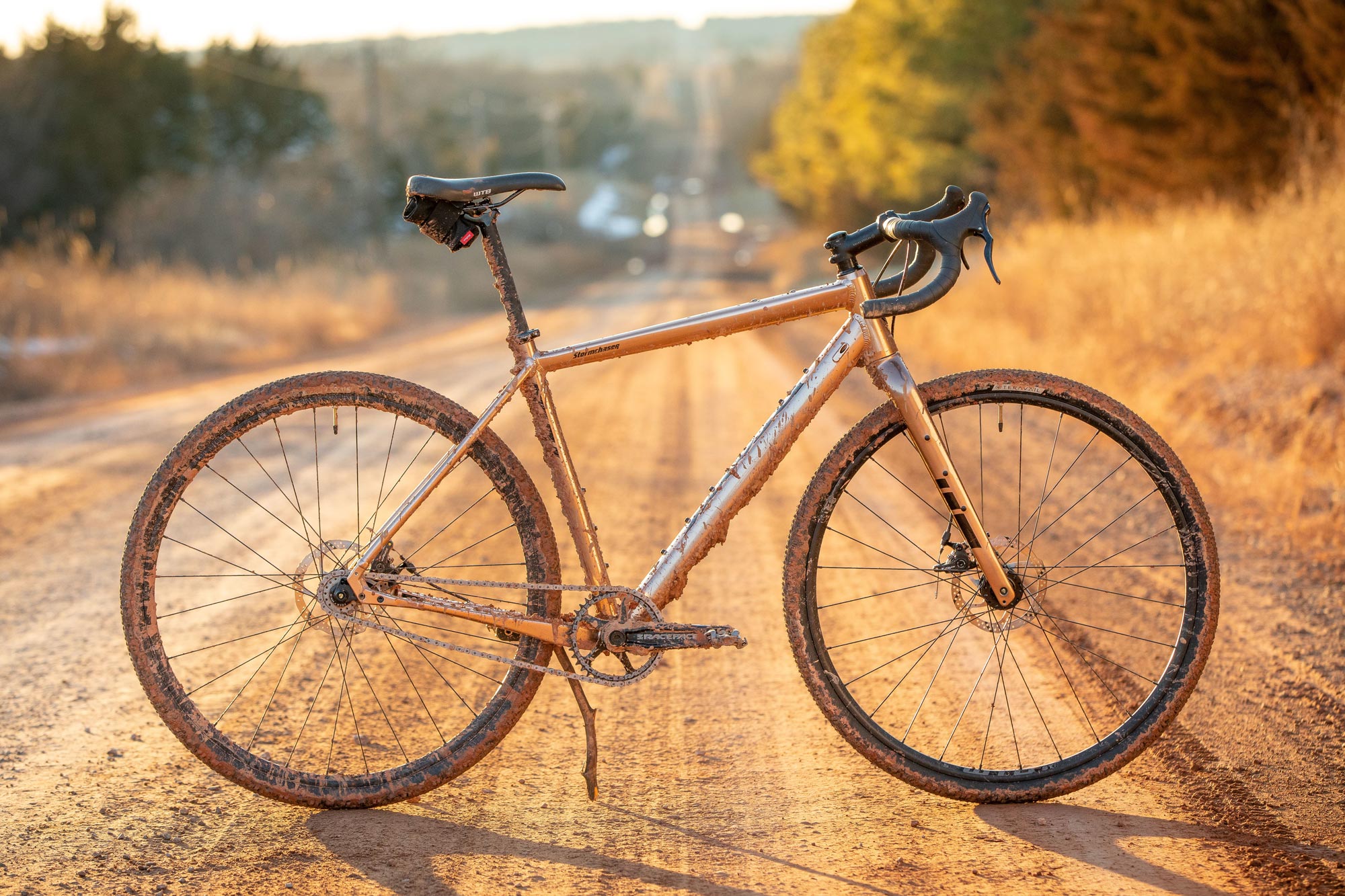Sick of derailleur mechanicals? Can’t afford a Rohloff? Love having a bit more time off the bike to lap up the views? Sucker for punishment? Need a new challenge?
If you’re answering ‘yes’ to these then have you considered single speed bikepacking or single speed touring?
In this article we are discussing all things fixed gear bikepacking and fixed speed touring. We’ve summarised the pros and cons at the end so you can get your head around whether trying out this seemingly mental option is up your street. Ultimately, you need to have a go and decide for yourself!
What is single speed or fixed gear riding?
As with most things in the cycling world, the clue is in the name. You pick one gear and get rid of all the rest and stick to a single speed for the whole time. You’ve got one gear ratio for everything. You’ve got a ‘fixie’. This means no up or down shifting for different inclines or terrains. This means spinning out on the flat or slogging it out (or walking) up the hills. It means learning to utilise momentum. However, it also means less moving parts for mechanicals and a completely different riding challenge!
How do I make the jump to single speed bikepacking?
Before going full gung-ho and getting rid of all your gears you need to work out what ratio works for you. Try spending a week or so in each gear without shifting out. Try it out on your commute and up your usual hills. Get a feel for what works for you. Everyone’s preferences will be different. Are you wanting to power up (or walk up) the hills and be speedier on the flats? Or do you want to spin up the hills and chill behind on the flats?
One more serious thing to think about is the change in forces that will go through your body and knees when (and if) you make a change to single speed. If you suddenly start peddling your heart out on the flats you are going to be a lot more susceptible to knee issues. Be careful kids! Start with shorter trips and less luggage and work up, otherwise you might find yourself hiking not biking!
What gear ratio is best to get my fix(ie)?
As we said before, everyone is different and it depends where you’re planning on going. If you’re fixed gear mountain biking on undulating single track then your choice will be different than fixed gear touring bikes on flatter gravel or sealed roads. You need to try your legs up different inclines with different loads on your bike to get a feel for what you like. If you have longer varied rides planned, having around a 2:1 ratio with 32t and 16-18t is a good place to start.
Are fixies expensive?
Generally single speed bikes will be less of an investment. That encompasses money spent on getting stuff mended. Most faults happen with derailleurs and gear cables. You can buy an $800 fixie and an $800 multi gear and often the parts will be of better quality in the single speed. A lot of the cost of a multi gear bike is in the crankset and cassette so if you haven’t got to pay for that you can upgrade the rest. On the flip side, some would say you’re paying more for the ‘fad’ of having a stylish looking fixie rather than the technicality of a multi gear. You choose!
The Tour Divide on a single speed
Let’s go back to single speed riding being absolutely mental. Can we just take a minute to look at those people who choose to ride one of the most prolific off road routes in the world on a fixie. The Tour Divide is a 4420km off-pavement route from Canada to Mexico crisscrossing the Rocky Mountains. It’s an ultimate endurance race. In 2019 the women’s winner Alexandera Houchin did it on a single speed finishing it in 18 days and 20 hours! This was nearly 5 days faster than her geared win the year before, and only 3 days slower than the overall women’s record! Mental! This has become a category within the race itself with many riders planning their ratios for the race on forums and having their own single speed records etc. This style of bikepacking is certainly gaining in popularity and offers a different type of challenge for those seeking something new.
Pros of single speed
- Less mechanical issues to deal with
- New challenge
- Increasing leg strength and climbing ability
- Less to think about while riding
- Good for commuting
- Better value for money
Cons of single speed
- Potential for injury initially if gear ratio too extreme or change too sudden
- Less ability to adapt to varied terrain
- Potentially more time off the bike hiking
- Potentially more difficult with excess luggage
- You’ll be considered crazy by all your mates
Best Single Speed Gravel Bike For Bikepacking

Are you after that ultimate single speed bikepacking rig for those gnarly across country bikepacking races? Introducing the Salsa Stormchaser Single Speed Gravel Bike. What a beast!
Made for those muddy conditions, the Stormchaser was originally designed to excel in the worst weather conditions nature can produce. Made from a lightweight aluminum frame and carbon fork that borrow from Warbird’s stable geometry and added Class 5™ VRS to soak up micro-impacts. With a large emphasis on wet weather conditions while riding this bike. It includes abrasion plates on the fork, plus internal cable routing and fender mounts to protect you and your gear from the elements to prevent wear from mud-caked tires and extra tire clearance to keep you rolling in all conditions. If you don’t try a quality singlespeed like this one, you are missing out greatly in the cycling world.

